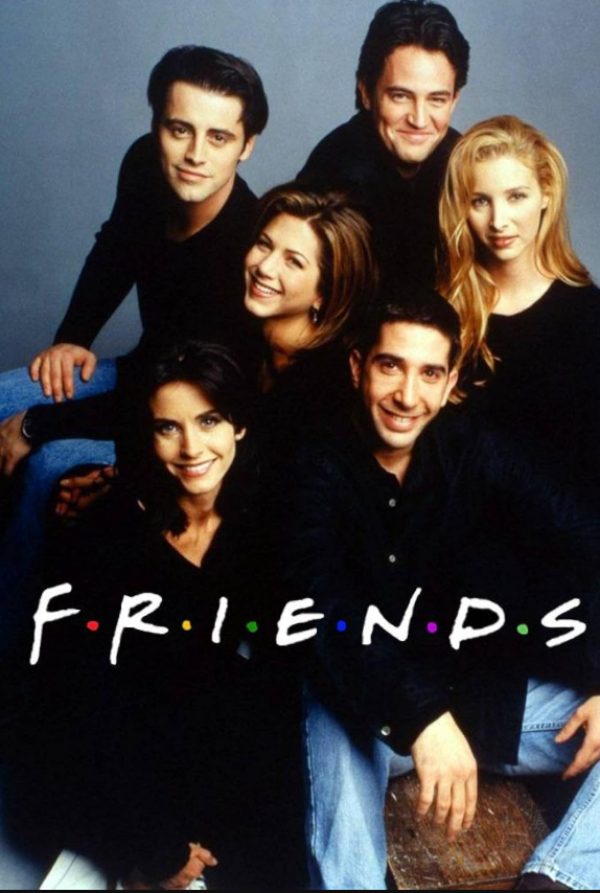The Friends show presents an age restriction question which confuses many parents about its suitability for their children. So, you’re not alone. The abundance of streaming services as well as Friends merchandise and memes provides natural access points for people to watch the ’90s TV series. Still, We must review the Friends age rating before viewing its content along with its internal breakdown.
The seemingly innocent friends regularly deliver juvenile humor and conventional elements that many audiences believe should not be shown to children. People looking for better clarity about the Friends age rating system can find their answers in this article. Let’s dive in!
What is the Friends age rating?
The following information outlines the official age rating details that Friends has received.



- Friends holds the TV-PG classification for the United States television audience. Parents must supervise their children while they watch the show since it is suitable for most children.
- The British viewer assigned a 12+ rating to Friends enabling people who reached age 12 to watch the show. Some of the content in the show will create problems for children under a specified age category.
The presence of mature content elements in Friends therefore requires children to not watch this show.
Protect minors from online with parental control!
The content of Friends parents should be aware of
Parents need to understand these aspects of Friends before they allow their children to watch episodes in full viewing.
- Sexual innuendos: The show contains numerous sexual double meanings. The show contains numerous jokes which fool younger viewers while older children and teenagers would find them funny although these comedic elements sometimes cause awkwardness among audience members. Throughout the show the relationships receive casual treatment but many intimate suggestions become plain to understand.
- Mature relationships: The show explores mature adult relationships that depict breakup issues together with affairs along with the realities of dating throughout the 20s and 30s life stage. Several parents would prefer to protect their younger children from observing these intricate relationship stories on the show.
- Substance use: Individuals within the show frequently demonstrate their substance use through both bar-dining and personal alcohol consumption within their residences. The show features both casual smoking practices together with occasional references about drugs. The characters’ unappealing habits occur frequently in Friends’ fictional world yet they do not receive positive treatment so they might influence children who are easily influenced.
- Profanity: Weak profanity appears in the show through occasional language such as “damn” and “hell.” Children who faint at minor oaths may want parents to be attentive about these weak profane expressions.
- Body image: Some children or teenagers may develop body image worries because Friends places intense emphasis on appearance especially through the portrayals of Rachel and Monica.
The show provides mostly pleasant entertainment yet a few of its topics could trigger parental concern thus parents should be alert to the upcoming content.
How does the TV show Friends impact minors?
Friends achieves a status beyond television shows because it has become a cultural force. What kind of influence does Friends have on young watchers? Let’s dig in.
- Relationships & expectations: Youngsters who watch Friends develop specific ideas about relationships as well as relationship expectations through-screen exposure. Through its presentation the show celebrates love while revealing the difficult aspects that exist in friendship and romance. The characters from Friends experience brief relationships followed by romantic separations before getting into problematic romantic situations. Youth viewers develop false ideas about love relationships as well as dating experiences and the nature of friendship because of their Friends viewing habits. The exaggerated dramatic aspects in the show create an illusion that love relationships are incredibly complicated and distant from actual reality.
- Humor & boundaries: Friends delivers its characteristic fast comedy along with borderline controversial content. Children may develop altered understandings of humor because the show includes sexual banter as well as swear words and light-hearted comments on delicate subjects such as breakup experiences and negative thoughts about body standards. Youth viewers could find it difficult to determine appropriate comedy limits because the show degrades both physical attributes and romantic connections between people.
- Social interactions: Social Interactions function like a model of real friendships although they exist in a unique manner on Friends. Friendship ties provide emotional strength to the characters while they maintain an abundant exchange of taunting remarks as well as occasional uncouth mannerisms. Adolescents adopt such behaviors as part of their perceived coolness because they find it fashionable to behave arrogantly toward others. Lightheartedness aside, this form of interaction may result in misconceptions about appropriate behavior when dealing with friends in everyday life.
Friends provides entertainment but at the same time it poses a threat to minors regarding their understanding of relationships and communication and their perception of humor. Parents must evaluate these factors for children to watch the show.
How can parents safeguard minors from inappropriate content online?
Online entertainment creates risks that mainly affect younger users. Parents must take proper measures to shield their children from watching unacceptable material because streaming services make Friend episodes easy to access. These steps will help you maintain safe viewing conditions for your children during their online show time.
1. Set clear viewing guidelines
Begin by discussing with your child which shows they wish to watch. Teach your children about proper show selection according to their age range. When you establish viewing limits at the beginning their future decisions will improve. Narrate the special topics tackled in Friends and describe specific examples of unacceptable material.
2. Use parental controls on streaming platforms
Before letting your kids access streaming content you can use parental tools to block what they should not see. You need to establish security measures like setting a PIN and enabling child profiles to regulate content on any streaming service such as Netflix or Amazon Prime. You can customize the platform settings to eliminate TV shows with rated content.
Here are a few options:
- Netflix: lets you apply age-based show filters through profile PIN protection.
- Amazon Prime: Amazon Prime features profile creation options that prevent kids from accessing age-inappropriate content.
- Disney+: After choosing the kids’ mode profile users can select which content types their children cannot access.
3. Monitor viewing habits regularly
You should regularly inspect what your child watches even if they have viewing restrictions enabled. Customers from Netflix and YouTube can access their specific viewing records through the platform settings. Daily checks of this list prevent children from encountering content beyond their age range.
4. Watch shows together
Your role as a viewer with your child allows you to monitor what they see more effectively. When you watch TV together it gives you an opportunity to explain any confusing scenes or parts that may be inappropriate during the show. Through shared viewing you will know if your child comprehends the show’s main ideas and jokes. The viewing process turns safer and creates opportunities to talk about important life topics with your child.
5. Use parental controls for enhanced protection
There are a ton of parental control tools on the market, like FlashGet Kids with advanced restrictive and monitoring systems to control what children see online. These apps function as a protection tool that guards children through online streaming content and web surfing activities. Besides content filtering tools, parents can make total controls to protect their children from troublesome online content.



Parental control features:
- Content filtering: With FlashGet Kids parents can restrict access to websites, applications and media that children should not view. Your child will gain access only to suitable media through this solution’s restrictions.
- Screen time management: The tool enables parents to establish how long their kids spend using digital devices. You can enter how much time in hours your child should use each app whether for a single app or the entire screen.
- Real-time monitoring: FlashGet Kids continuously tracks your child’s online activities and displays the latest monitoring results. You will know what content they view online and receive automatic updates if they try to access dangerous materials.
- Location tracking: The location tracking feature of FlashGet Kids lets parents monitor where their child is at all times so they can rest easy while their child uses mobile devices away from home.
- App blocking: You can select specific apps for total blockage alongside time boundaries for app use to prevent children accessing inappropriate content.
6. Educate your kids about online safety
Teachings your children about internet safety remains the main thing you need to do. Explain to them about serious online risks such as meeting bad people, facing mean messages and coming across wrong content. Tell your children they can speak with you any time they witness online content that is troubling to them.
Opening discussions about internet safety plus using FlashGet Kids keeps your children secure during their online viewing of Friends.
Final words
Friends enjoys popularity among viewers but awarding the show with a restrictive age classification indicates inappropriate material for pre-teen consumption. Although Friends age rating can be a cause of concern, parents need complete awareness about the mature content including sexual aspects and occasional offensive language that appear in the show. They need to monitor it.
Watching Friends brings entertainment to teenagers yet you should let your child mature before the show if content concerns you. The monitoring and protection tools available through FlashGet Kids should help parents supervise their children while they use the internet. Watching TV should always be monitored so children receive appropriate content for their development level.
FAQs
The TV-PG rating appears on Friends but the show provides mature themes and numerous sexual innuendos that include occasional mild profanity. The show is most appropriate for teenagers who grasp the jokes yet may be inappropriate for younger children.
The U.S. rating for Friends stands at PG indicating parents should exercise caution when their children watch it. The content of this show is for mature audiences yet it avoids M rated intensity with its mixture of adult content which could disturb under-18 viewers.
The show Friends is suitable for teens but parents must know about the mature themes such as sexual jokes as well as mild swearing and relationship conflicts. Young teens can watch Friends while requiring parental supervision since it is appropriate for older audiences.
You should explore Full House along with The Middle and Parks and Recreation if you want something comparable to Friends yet appropriate for families. Children will find these shows more suitable because they maintain humorous content without exposing young viewers to mature subject matter.

